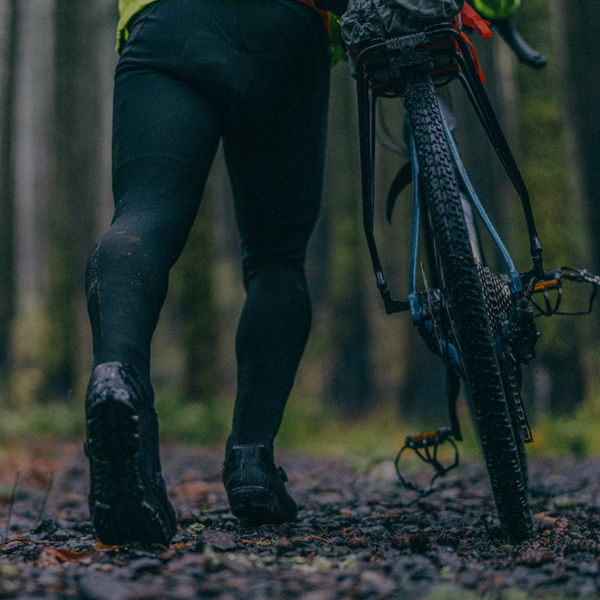
Here are two truths: mountain biking is great fun, and buying a mountain bike can be an intimidating prospect. There are so many choices, and some considerations seem more like inside jokes than real words (fat tires, chain slap, dropper post?). We’re going to make the process easier for you. Use this guide to ask the right questions, find the right answers, and get on the bike that is meant for you. Then get ready to enjoy the ride.
Key Questions
Before starting your search, you should determine the type of rider you are and what kind of riding you want to do. Ask yourself four questions.
What kind of riding do I want to do?
Do you want long mellow rides on smooth singletrack? Climbs and descents? Descents only? Get the bike that matches the kind of riding you’ll be doing most of the time.
Where will I ride?
Now be honest about how the riding you want to do matches the terrain where you’ll do most of your riding. If you have mellow trails in your area, getting a full-suspension bike will probably mean boring rides and unnecessarily difficult climbs. Get the bike that fits the terrain around you. You can always rent a bike for special trips elsewhere.
Is this bike comfortable?
While there are trends and suggestions to consider, your best bet is to get a bike you are comfortable on—not the one your friend or some forum recommends. While the trend is toward bigger wheels and tires, maybe you are more comfortable on a 27.5 than a 29er. Get what feels comfortable.
Will I still be able to afford the rest of the stuff I need?
Don’t blow your entire budget on a bike. You'll still need a helmet, cycling shoes, eye protection, repair gear, a hydration pack, and some biking clothing, including shorts or tights with a chamois.
Suspension
The first thing you should consider is what kind of suspension to get. While it can be tempting to get the most advanced technology on the market, more is not always more. If you get “too much” bike, you may find yourself bored on your local downhills as the suspension smooths every bump, and exhausted on the uphills as you pedal that complicated suspension up the hill with you. To find the right bike, you’ll pick from one of three main suspension styles.
Rigid
On a rigid bike, the frame connects directly to the wheels and tires without any softening suspension. These are best for the mellowest trails and will likely make you a bit uncomfortable should you want to use your bike to go off even small jumps and bumps. These bikes are mechanically simple and usually relatively affordable. Still, a rigid suspension is probably not the best choice for most riders unless you get a “fat-tire” bike, which offers some cushion thanks to their big, thick, low-pressure tires.
Hardtail
A hardtail bike has a rigid connection between the frame and the rear tire, but uses a suspension fork in the front to absorb some of the bumps of the trail, make your ride smoother, and help keep you in control over rough terrain. These are great for trail riding and can handle most downhills. They also climb well thanks to their rigid rear and lower weight, and are more affordable than their more complicated full-suspension counterparts.
Full-Suspension
Full-suspension or “full-sus” bikes have a suspension fork in the front and a rear suspension system in the back. The combination gives your bike a much more cushioned ride capable of handling big downhills, big drops, and rough terrain. Downside? These bikes are often heavier and more expensive. They’re also worse at climbing than more rigid bikes, since some of the energy you put into pedaling is instead put into moving the suspension up and down. Because of this, many full-suspension bikes have the ability to “lock-out” the rear suspension, making it temporarily more rigid.












